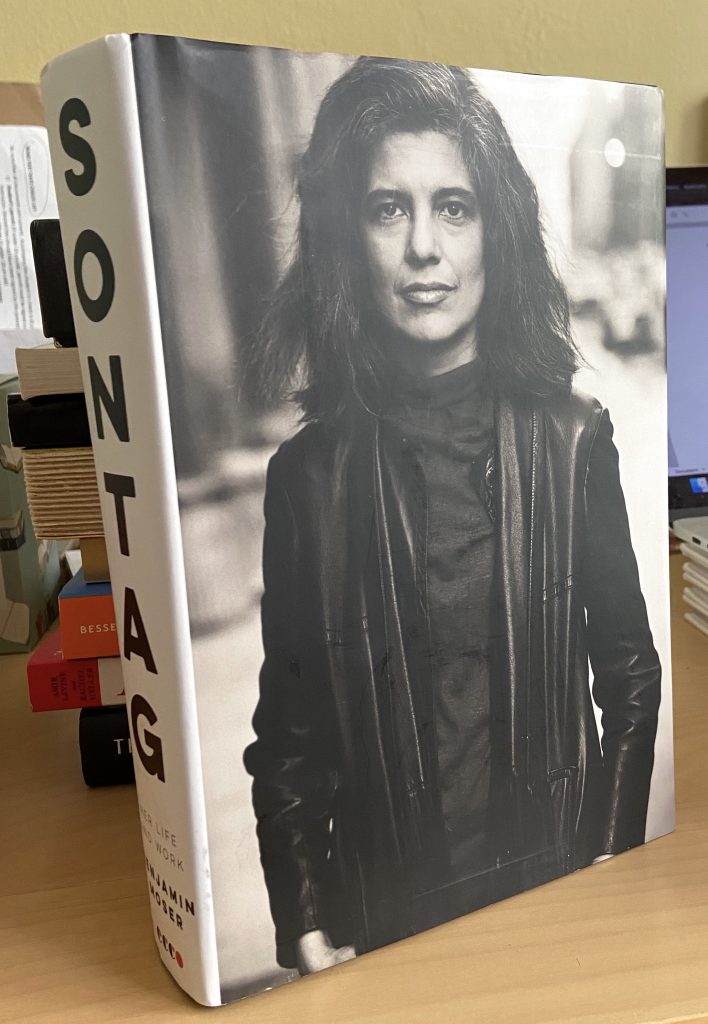
Here’s where I confess that I didn’t know much about Susan Sontag, her life, or her work before reading Sontag: Her Life and Work. I knew of her, of course, I knew she was a Public Intellectual ™, and that as a result many people had strong opinions about her. My own thoughts were a sort of mild disdain that I think comes from being a member of Gen X, and reading criticism of her without engaging with her own actual work beyond Notes on Camp.
I read Michelle Dean’s Sharp a few years ago. That book is a high-level overview of the lives of many 20th century public intellectuals who also happened to be women; Susan Sontag, Hannah Arendt, Dorothy Parker, Nora Ephron, and Joan Didion, amongst others. Without the softening of my views (or maybe a recognition of my own internalized misogyny) by Sharp, I’m not sure I would have decided to read Sontag.
Benjamin Moser has written a very in-depth biography, delving into both her relationships and her intellectual work. She clearly wants to be an intellectual from an early age., and works diligently to make it happen – and I feel like that try-hard-ness is ons of the reasons I was taught to disdain Susan Sontag. Trying wasn’t cool – everything had to be easy or come naturally to be accepted. Susan Sontag was both very smart and didn’t bother to hide her work.
One idea that she engaged with over and over, especially after her initial struggle with breast cancer in her 40s, was the relationship between a thing and its image, how the image, or the metaphor influenced how the reader or viewer thought about the thing itself. Now that we’re all living through the internet because of the pandemic, images and metaphors are what we swim in, even more than normal. I wish she was around and at the top her game right now because I bet she’d have a lot to say about Instagram (and maybe you want to read The Cut essay by Emily Ratajkowski about buying her own images back).
I often end a review with a recommendation, and I often cop out by saying ‘read this if you’re looking for x.” So much of reading and your enjoyment of a thing is dependent on who you are and where you are in your life. Understanding the basics of Susan Sontag’s ideas is essential to understanding how we think of public intellectuals, liberal or conservative, and how our political and media landscapes exist in the world. I would argue that this book will give you a good grounding in understanding those basics, regardless of what exactly you’re looking for.